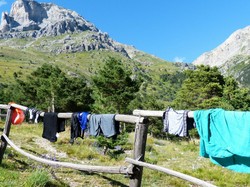Like many labor-intensive jobs, workers in the concrete construction industry confront few occupational safety hazards. Concrete slabs pose health and safety threats because they have a significant potential to harm those around them. Even slab jacking in Brisbane might be fraught with concrete safety hazards that could harm workers or cause injuries and, in some cases, death to other people on site. Therefore, while contractors working with concrete should not compromise getting work done right and at the right moment, they should have detailed knowledge about the job's risks. As they plan their concrete projects, they should implement a safety program to ensure the work zone remains safe for all workers to avoid injuries and other losses.
5 Safety Hazards When Working On Concretes
by RobertKeith
Like many labor-intensive jobs, workers in the concrete construction industry confront few occupational safety hazards
Like many labor-intensive jobs, workers in the concrete construction industry confront few occupational safety hazards. Concrete slabs pose health and safety threats because they have a significant potential to harm those around them. Even slab jacking in Brisbane might be fraught with concrete safety hazards that could harm workers or cause injuries and, in some cases, death to other people on site. Therefore, while contractors working with concrete should not compromise getting work done right and at the right moment, they should have detailed knowledge about the job's risks. As they plan their concrete projects, they should implement a safety program to ensure the work zone remains safe for all workers to avoid injuries and other losses.
The following are five safety hazards workers can face when working on concretes:
1. Skin, Eye, and Respiratory Irritation
Constant exposure to cement dust can cause skin, eye, and respiratory irritation. Direct skin contact with wet concrete can cause skin irritation and other skin problems, including dermatitis and chemical burns. Concrete hardens by absorbing moisture, and the chemicals in cement acquire moisture from anything it comes into contact with to aid the drying process. When the skin comes into contact with cement, the cement pulls moisture from the skin, damaging skin cells and leaving burns. Correspondingly, exposure to dust from dry concrete irritates the eyes and respiratory organs, including the nose and throat, causing breathing problems and other severe infections.
2. Poor Ergonomics and Lifting Injuries
Dry concrete is hefty. As a result, improper lifting, bad postures, and repetitive motions can cause injuries and musculoskeletal problems. However, most injuries result from improper lifting. When a worker attempts to lift a big piece of concrete without the appropriate equipment or uses the wrong techniques while moving heavy objects, they occur. However, while concrete can weigh 150 pounds per cubic foot, even the small pieces are heavy enough to cause injuries and permanent damage.
3. Falls From Elevated Platforms and Falling Objects
Accidental falls have become the most common construction site accidents, and they pose an acute concrete safety hazard risk. Falls from elevated heights cost employers huge disability costs and cause many accidental deaths in construction sites. Although falling from high places is the most common safety hazard in concrete construction sites, a little fall, trip, or slip when holding a heavy item or working around concrete mix can cause serious injuries. Correspondingly, falling objects from elevators, concrete block stacking equipment, and conveyor belt systems in concrete construction are risky because they may hit workers and other people onsite and cause severe injuries. They seriously injure the head, neck, shoulders, and spine or lead to fatalities.
4. Vehicle Accidents
Concrete construction sites require large, heavy-duty vehicles and construction equipment to work in a demanding work zone. Although many contractors remain vigilant to minimize vehicle accidents, when workers, both trained and untrained, improperly use cars and other heavy pieces of construction machines, injuries and deaths are likely to occur. Likewise, poorly maintained vehicles can lead to crushing injuries and other damages for truck drivers and other workers.
5. Heat-Related Problems
Although heat-related problems are a risk to anyone who is outdoors, individuals working in the concrete construction site are in a more dangerous position to suffer these illnesses. Whenever concrete gets direct exposure to sunlight, it absorbs heat and releases that heat slowly, even at night. Therefore, since many concrete workers spend a prolonged amount of time in the sun without adequate hydration, they suffer from heat-related illnesses. The crews that work at night experience high ambient temperatures, which puts them at a higher risk of heart stroke and other heart disorders.
Working with concrete is labor-intensive and requires a large-scale and potentially hazardous process. Therefore, when discussing the safety hazards of operating concrete construction equipment, the stakes are high. Although contractors cannot mitigate every event that will happen on the construction site, they become responsible for any financial cost. These hazards incur and struggle to regain their public image after a significant worksite accident occurs. However, they can avoid many concrete safety hazards by adhering to proper protocols and procedures. Besides, they should put their workers', end-users', and neighbors' health and safety a priority by regularly performing risk assessments.
Autobiography
Eric Reyes is a passionate thought leader having been featured in 50 distinguished online and offline platforms. His passion and knowledge in Finance and Business made him a sought after contributor providing valuable insights to his readers. You can find him reading a book and discussing current events in his spare time.
You might also like
How to Wash Your Clothes with Natural Laundry ProductsLimit your family's exposure to chemicals by using green laundry soap. This g...

 10 Things You Need To Have Clean and Spotless Clotheson 10/28/2021
10 Things You Need To Have Clean and Spotless Clotheson 10/28/2021
 10 Business Ideas For Newbies That Will Thriveon 10/27/2021
10 Business Ideas For Newbies That Will Thriveon 10/27/2021

Comments